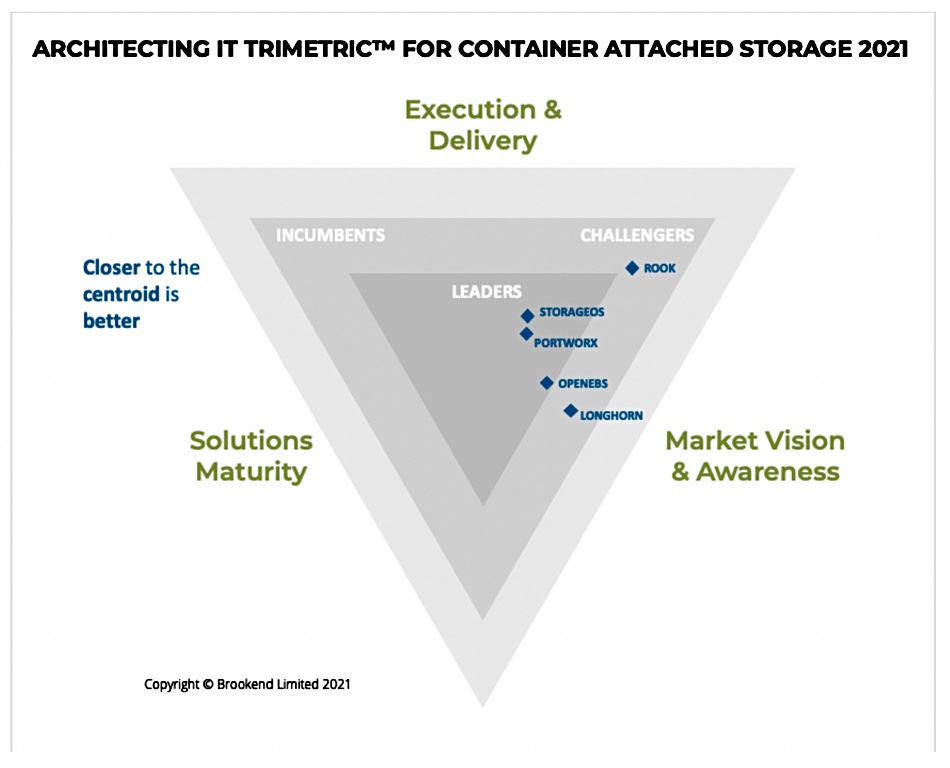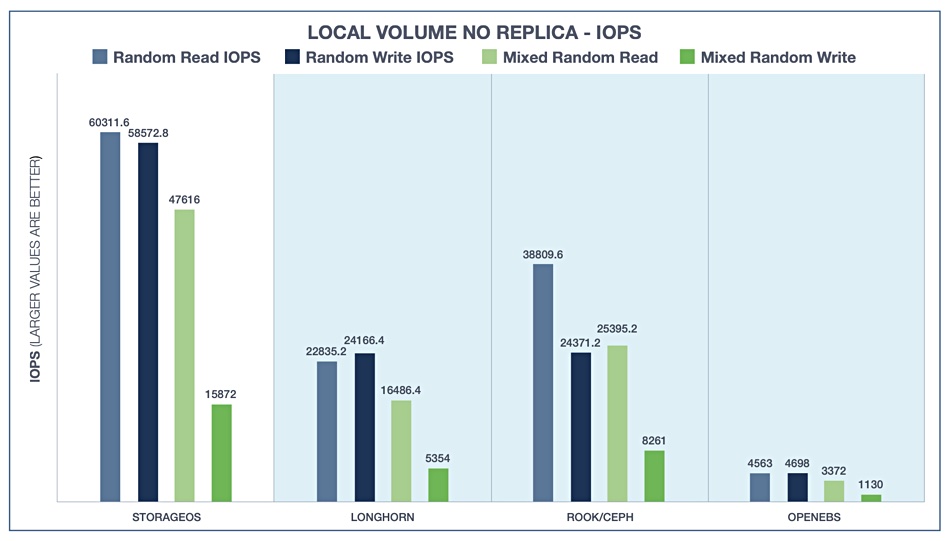In this week’s storage roundup we look at: container-attached storage; extracting, transforming and loading data into cloud data warehouses, and a fresh new take on the classic 4-box diagram. Read on.
Behold a container storage trimetric
Architecting IT consultant Chris Evans has managed the unimaginable and devised a new multi-box diagram for an IT market – for container-attached storage, in this case. We are familiar with Gartner’s Magic Quadrant, the Forrester Wave, IDC’s Marketscape, GigaOm’s Radar Screen and Coldago’s 4-column Research Map, Now Evans has devised his own representation, a three-layer, triangle-based concept.
The scheme is similar to the GigaOm Radar Screen, with suppliers progressing inwards from challenger and incumbent status to leader. It uses three axes to position them: Execution and Delivery, Market Vision and Awareness, and Solutions Maturity.
Evans calls it a Trimetric diagram, and here it is in its three-side glory;;

The diagram shows five suppliers; Rook/Ceph, SUSE Longhorn, OpenEBS, Portworx and StorageOS with StorageOS and Portworx, now owned by Pure Storage, being the leaders.
We doff our tricorn hats in salute to this diagrammatic adventure excellence from the excellent Chris Evans.
StorageOS container storage benchmark
StorageOS came out tops in a container-attached storage (CAS) benchmark test compared to Longhorn, Rook/Ceph and OpenEBS castor, and using the open source fio test.
With CAS, persistent storage is implemented as software-defined storage (SDS) running in containers on the same infrastructure – nodes in a Kubernetes cluster – as the applications. The test storage medium consisted of NVMe SSDs.

StorageOS performed better in all tests, particularly in local read performance with and without a mirrored replica. It delivered greater throughput, bandwidth and with lower I/O latency than the other suppliers.
Supplier speed test results in CAS tests. Check out the report here.
Note: The testing used OpenEBS’ cStor, a precursor of the current and much faster MayaStor. B&F will publish a MayaStore performance article shortly.
Step into the Datameer
Cloud data ingest company Datameer has launched Spectrum ETL++ to get data faster into cloud data warehouses such as Snowflake, Google BigQuery, AWS Redshift, Azure Synapse, Databricks and various cloud data lakes.
George Shahid, Datameer CEO, said: “Datameer Spectrum … enables analytics teams to not only extract data from any sources — on-premises or in the cloud — but to transform it to their needs in a few clicks and load it in any cloud data warehouse provider without having to write a single line of code—and at a fraction of the costs of alternative solutions.“
Spectrum has a multi-user interface with visual, spreadsheet, and SQL interfaces. These can access more than 280 functions and more than 200 data source connectors.
Shorts
Object storage supplier Cloudian has announced its sixth consecutive fiscal year of record bookings, including its highest quarterly sales to date in the fourth quarter of 2020. It expanded its worldwide customer base by 36 per cent for the year, to over 550 customers, whose total Cloudian storage capacity grew 63 per cent.
CTERA has announced strong growth in 2020 with a 47 per cent year-over-year annual recurring revenue increase. Its products are deployed in over 50,000 sites in 110 countries and used by millions of corporate users daily.
Micron has upped revenue guidance for the current quarter from $5.6bn – $6.0bn range to a $6.32bn – $6.25bn range. It thinks its gross margin will also improve.
DR and data protection supplier Zerto said it expanded its customer base by 100 per cent and doubled its global healthcare business in the second half of 2020. There was a 100 per cent increase in project implementation size in the global public sector and a 300 per cent spike in EMEA public sector project implementation.
HYCU Protégé for O365 is now generally available to protect Office365 (now Microsoft365 or M365) data with its backup-as-a-service, as well as virtual machines and apps on Enterprise Clouds and Public Clouds.
In-memory database supplier Redis Labs has announced the general availability of Redis Enterprise-powered tiers on Azure Cache for Redis. The new Enterprise tiers, managed by Microsoft, enable companies to optimise for low-latency data access in applications that need it.








